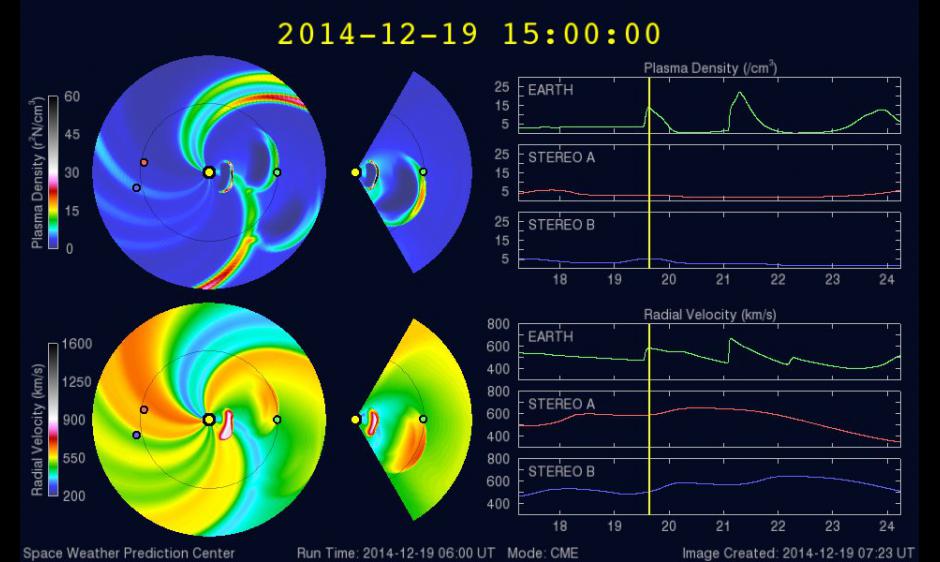
After further analysis, it appears that a second coronal mass ejection (CME) occurred yesterday with the M6 flare, to accompany the CME from the M8 flare on 17 December. The first event had a trajectory largely to the south of Earth and was originally only expected to produce glancing blow effects. The second CME appears to be a little more on a Sun-Earth trajectory, but was not exceptionally energetic. Minor to Moderate (G1-G2) geomagnetic storms are possible. A Watch has been issued for G1 conditions on Saturday, 20 Dec - after passage of the first CME late today (UTC). A Watch for G2 conditions has been issued for Sunday, 21 Dec. upon anticipated passage of the second transient.
What does all of this mean? For most people, not much and this type of activity is fairly common. However, there could be an increased chance to see the aurora across southern Canada and possibly along the northern border of the U.S. - given a cloud free night.